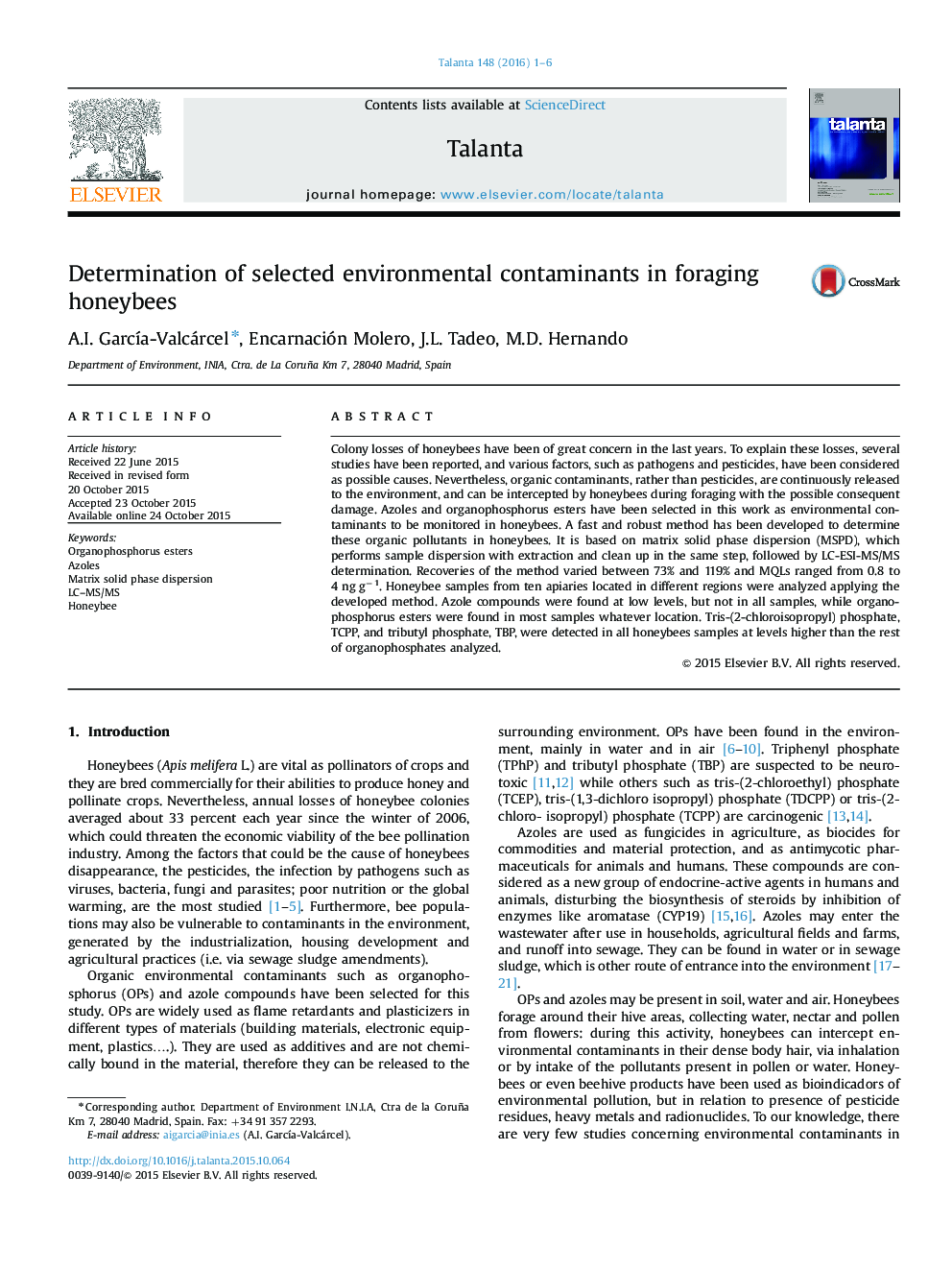| کد مقاله | کد نشریه | سال انتشار | مقاله انگلیسی | نسخه تمام متن |
|---|---|---|---|---|
| 1243751 | 1495787 | 2016 | 6 صفحه PDF | دانلود رایگان |
• A MSPD-LC–MS/MS method was used for the determination of contaminants in honeybees.
• Organophosphorus esters and azole compounds were determined in honeybee samples.
• A low amount of sample and solvent was required.
• Levels of contaminants were determined in bees from different Spanish locations.
Colony losses of honeybees have been of great concern in the last years. To explain these losses, several studies have been reported, and various factors, such as pathogens and pesticides, have been considered as possible causes. Nevertheless, organic contaminants, rather than pesticides, are continuously released to the environment, and can be intercepted by honeybees during foraging with the possible consequent damage. Azoles and organophosphorus esters have been selected in this work as environmental contaminants to be monitored in honeybees. A fast and robust method has been developed to determine these organic pollutants in honeybees. It is based on matrix solid phase dispersion (MSPD), which performs sample dispersion with extraction and clean up in the same step, followed by LC-ESI-MS/MS determination. Recoveries of the method varied between 73% and 119% and MQLs ranged from 0.8 to 4 ng g−1. Honeybee samples from ten apiaries located in different regions were analyzed applying the developed method. Azole compounds were found at low levels, but not in all samples, while organophosphorus esters were found in most samples whatever location. Tris-(2-chloroisopropyl) phosphate, TCPP, and tributyl phosphate, TBP, were detected in all honeybees samples at levels higher than the rest of organophosphates analyzed.
Figure optionsDownload as PowerPoint slide
Journal: Talanta - Volume 148, 1 February 2016, Pages 1–6
